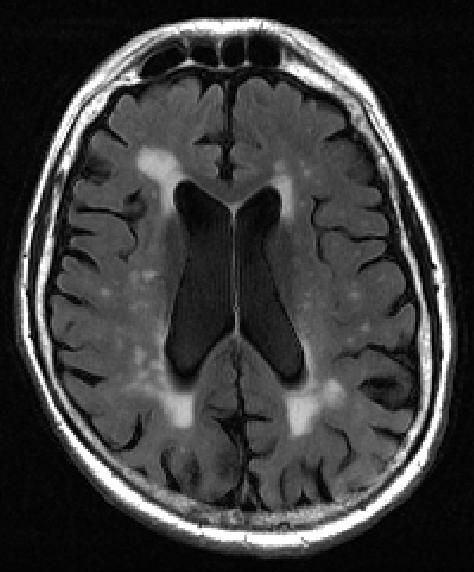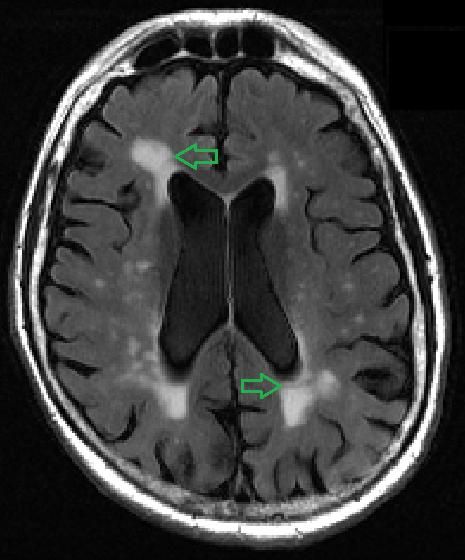New Tool Used with MRI Better Detects White Matter Lesions
A tool that objectively measures the volume of white matter lesions can accurately pinpoint evidence of early dementia.
A new mapping tool used with MRI can help radiologists pick up on the early signs of dementia with more than 70 percent accuracy, a new study has revealed.
Currently, providers rely on a “trained eye” to distinguish white matter lesions – hyperintensities – that can point to the beginning stages of cognitive decline. But, in an article published Oct. 27 in Academic Radiology, a team of investigators from New York University (NYU) Grossman School of Medicine share the results of their new tool that can analyze tissue damage seen on MRI brain scans.
“Our new calculator for properly sizing white matter hyperintensities, which we call bilateral distancing, offers radiologists and other clinicians an additional standardized test for assessing these lesions in the brain, well before severe dementia or stroke damage,” said study senior investigator Yulin Ge, M.D. professor of radiology at NYU Langone.
MRI image of human brain shows multiple bright spots (white matter hyperintensities) in center Courtesy: Elsevier/Academic Radiology

Patients who have more and larger white matter lesions on the gray matter of their brain are more likely to experience memory loss and emotional problems, especially as they get older, the team said. If these spots appear at the center of the brain, they can also indicate worsening dementia or other conditions, such as stroke or depression, that can damage the brain.
Instead of relying on the existing three-point scale method where providers use their best judgement to stage disease, this team set out to create a more standardized, objective method that could accurately measure lesion volume and location. Providers can access the tool here at no cost.
MRI image of human brain shows multiple bright spots (white matter hyperintensities) in center. Courtesy: Elsevier/Academic Radiology

To do so, they randomly selected 72 MRI scans from the Alzheimer’s Disease Neuroimaging Initiative. Most patients were over age 70, and an equal number of men and women were included. Their cognitive abilities ranged from normal brain function to mild cognitive decline to severe dementia.
Once the brain was mapped with the most up-to-date MRI techniques, the team applied computer software to calculate the exact location and volume, in liters, for all white matter lesions that could be seen. They determined a lesion’s volume based on its distance from both side surfaces of the brain with normal ranges between 0 milliliters, indicating no lesions seen, and 60 milliliters, referring to some lesions. Any volume over 100 milliliters, they said, indicated severe disease.
Based on their calculations, which they crossed-checked, the team determined that 7 out of 10 – roughly 70 percent – of their measurements matched with the patient’s actual diagnosis.
Employing this tracking tool can be useful clinically, said study lead investigator Jingyun “Josh” Chen, Ph.D., research assistant professor of neurology at NYU Langone. With a tracking and measurement tool that is standardized, clinicians will be able to monitor whether – and how – white matter lesions grow in a patient’s brain relative to other tau and beta-amyloid proteins that are believed to be involved in the development of dementia and Alzheimer’s disease.
But, providers should proceed with caution, he noted. White matter lesion measurements are not enough on their own to validate an early dementia diagnosis. Providers should still take other factors, such as a history of brain injury, memory loss, and hypertension, into consideration as they are verified features of cognitive decline or other brain and blood vessel diseases.
Work with this tool is still ongoing, the team said. They are now testing it further with an additional 1,495 brain scans that will include a more diverse patient population.
For more coverage based on industry expert insights and research, subscribe to the Diagnostic Imaging e-Newsletter here.
Emerging AI Algorithm Shows Promise for Abbreviated Breast MRI in Multicenter Study
April 25th 2025An artificial intelligence algorithm for dynamic contrast-enhanced breast MRI offered a 93.9 percent AUC for breast cancer detection, and a 92.3 percent sensitivity in BI-RADS 3 cases, according to new research presented at the Society for Breast Imaging (SBI) conference.
Could AI-Powered Abbreviated MRI Reinvent Detection for Structural Abnormalities of the Knee?
April 24th 2025Employing deep learning image reconstruction, parallel imaging and multi-slice acceleration in a sub-five-minute 3T knee MRI, researchers noted 100 percent sensitivity and 99 percent specificity for anterior cruciate ligament (ACL) tears.
New bpMRI Study Suggests AI Offers Comparable Results to Radiologists for PCa Detection
April 15th 2025Demonstrating no significant difference with radiologist detection of clinically significant prostate cancer (csPCa), a biparametric MRI-based AI model provided an 88.4 percent sensitivity rate in a recent study.